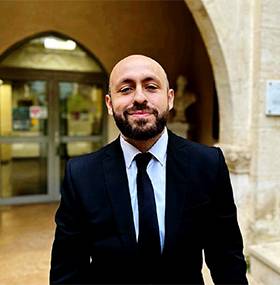When the decades-long Assad family dictatorship fell in December, it sparked hopes for a better Syria. But did it bring hope to all Syrians?
The outbreak of peaceful protests in Syria in 2011 demonstrated the Syrian people’s wish for a government that truly represents them. With the rise of radical groups in Syria in the early years of the consequent civil war, most prominently Daesh, which took control over large parts of Syria, many people perceived the alternative to the Assad regime to be disastrous. The regime used the rise of Daesh and even supported its survival in an attempt to categorise all Syrian opposition forces as “terrorists”.
Assad’s strategy was effective, and he gained support both domestically and internationally by pushing the notion that ethnic and religious minorities in Syria would be persecuted without him and his regime. Syria’s diverse ethnic and religious demographics — such as Assyrians, Armenians, Kurds, Christians, Druze, Ismailis and Alawites — played a major role in the success of this strategy. These communities were caught in a life-and-death dilemma, where the familiar rule of dictatorship, despite its oppression, appeared preferable to the uncertainty of the terrorist Daesh.
On 8 December last year, though, the scenario changed dramatically. Assad fled to Moscow and his regime collapsed. The new government led by Hay’at Tahrir Al-Sham’s leader, interim President Ahmed Al-Sharaa, presents a very different reality.
Al-Sharaa is trying to ensure that minorities and other vulnerable groups will be protected and treated well under the new administration.
“We are working to protect sects and minorities from any attacks, whether they come from within or external forces attempting to exploit the situation to stir sectarian discord,” he is on record as saying. Nevertheless, minorities in Syria did not perceive such statements as a guarantee of their protection, mainly due to the troubling history of the interim president and his group’s previous affiliation with Al-Qaeda. Hence, the issue of minorities and their protection has become a central topic of discussion for Syria and those countries planning to establish relations with the government in Damascus.
This has given the issue of minorities a particular importance, constituting Al-Sharaa’s first major test in the political realm. However, the issue cannot be resolved simply by making public appearances and statements on what his government will or will not do.
READ: Syria security sweep as Assad loyalists accused of attacks
It is clear that the protection of minorities in Syria is crucial for establishing democracy in Syria. Moreover, it holds even greater importance for Al-Sharaa and his government, as his legitimacy within Syria and on the international stage depends on it. We saw that Assad’s legitimacy was rooted in his ability to present a veneer of unity and cohesion among Syria’s minorities.
Their situation, though, has been exploited by regional and international powers seeking to advance their own interests in Syria or put pressure on Al-Sharaa to agree to their demands. This is evident in the examples of two minority groups in Syria, the Druze, with three per cent of the population, and the Kurds, with ten per cent.
Syria’s Druze community is located mostly in southern areas. Although Druze spiritual leader Sheikh Hikmat Al-Hajri called on his people “to protect both public and private property as a national and moral duty, prevent acts of vandalism and block any attempt to undermine security and stability in Sweida,” the Druze case has served as a critical security breach for Syria. Israel demonstrated its readiness to protect the Druze, arguing that the Syrian forces were attacking the minority. “We will not allow the terrorist regime of radical Islam [sic] in Syria to harm the Druze,” Israel insisted “If the regime harms the Druze, it will be harmed by us.” Israeli forces duly invaded and occupied southern areas of Syria, and warned Damascus that Syrian forces must not enter those areas.
This was, of course, Israel exploiting the Druze in order to safeguard its own interests in the new Syria.
The Kurds present a similar case. Mazloum Abdi, the commander of the Syrian Democratic Forces (SDF) — a US-backed, Kurdish-led armed group which opposed Assad — said that Al-Sharaa’s government “presents an opportunity to build a new Syria based on democracy and justice that guarantees the rights of all Syrians.” Yet, he requested US President Donald Trump to keep US troops in Syria to prevent a resurgence of Daesh in the power vacuum in Syria. The minority card has, in effect, been played twice, because the SDF also has Christian fighters. As a result, US troops have remained in eastern Syria, officially to support the SDF, but actually to benefit from Syria’s resources and double-down on their military presence, thus challenging the country’s sovereignty.
READ: Syria: Constitutional Declaration is for the transitional phase only
The religious and ethnic minorities in Syria have long played a pivotal role in shaping the country’s political landscape, yet their position remains precarious amid ongoing instability. While some view them as essential to fostering a pluralistic and democratic future, others see them as tools for political leverage by both domestic and foreign actors. To address this issue effectively, the interim president and his government must take bold and decisive steps to build an inclusive Syria, where national dialogue is not merely symbolic, but also truly meaningful and transformative.
The views expressed in this article belong to the author and do not necessarily reflect the editorial policy of Middle East Monitor.


![Syrians gather at Khan Arnaba junction in Quneitra to stage a protest against Israeli Prime Minister Benjamin Netanyahu’s call for the demilitarisation of southern Syria, on February 24, 2025 Bakr Al Kasem/Anadolu Agency]](https://i0.wp.com/www.middleeastmonitor.com/wp-content/uploads/2025/02/AA-20250224-37156016-37156012-SYRIANS_PROTEST_NETANYAHUS_CALL_FOR_DEMILITARIZATION_OF_SOUTHERN_SYRIA-scaled-e1740488704312.jpg?fit=1200%2C800&ssl=1)








